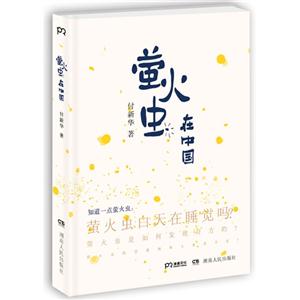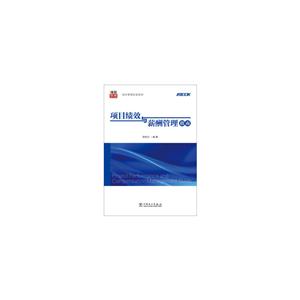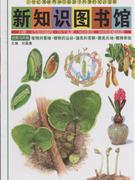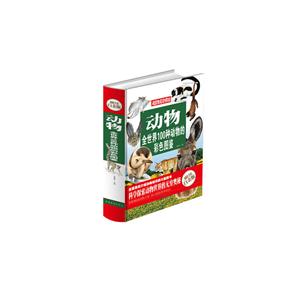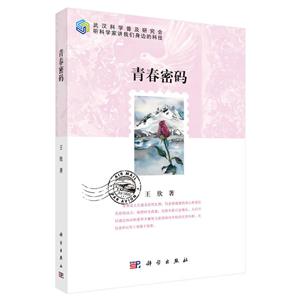废水处理原理与技术

|
废水处理原理与技术作者:李大鹏 开 本:16开 书号ISBN:9787511449283 定价:45.0 出版时间:2018-08-01 出版社:中国石化 |
废水处理原理与技术 本书特色
本书以市政废水、农村生活污水、工业废水为对象,介绍了污水水质水量特点、处理机理(活性污泥法、生物膜法和厌氧法)和流程、典型处理技术(A/A/O、氧化沟、SBR、MBR、生物滤池、生物转盘、湿地、氧化塘)、设计参数、典型案例、再生水技术和典型案例。
废水处理原理与技术 内容简介
本教材在实验项目的编排上,改变了以往单一传授技能训练的模式,采用由浅入深,循序渐进,逐步提高的方法,让学生有充分思考、开拓和创新的余地。
废水处理原理与技术 目录
Chapter1. Overview of wastewater 1 1.1 What is wastewater 1 1.2 The types of the wastewater 2 1.2.1 Domestic wastewater 2 1.2.2 Industrial wastewater 13 1.2.3 Rural wastewater 27 1.3 The effects of the wastewater 42 1.3.1 Chemistry of water impurities 42 1.3.2 Metallic Corrosion 46 1.3.3 Scale Formation 51 1.3.4 Fouling 51 1.4 Wastewater treatment processes 53 1.4.1 Preliminary and primary treatment 54 1.4.2 Secondary (biological) treatment 59 1.4.3 Tertiary (advanced) treatment 72 Chapter 2. Treatment theory of the activated sludge 81 2.1 The traditional activated sludge 81 2.1.1 The basic conception and the process 81 2.1.2 The forms and component of the activated sludge 82 2.1.3 The microorganism in the activated sludge and its function 83 2.1.4 The clarification process by the activated sludge 85 2.1.5 The effect of the environmental factors on the activated sludge 87 2.2 Some performance indexes of the activated sludge 93 2.2.1 Some performance indexes of the activated sludge 93 2.2.2 Some indexes of the activated sludge for designment and running 97 2.2.3 Aeration 100 2.3 The development and application of the activated sludge 104 2.3.1 Completemix activated sludge process 104 2.3.2 Tapered aeration process 105 2.3.3 Contactstabilization activated sludge 106 2.3.4 Highpurity oxygen activated sludge 108 2.3.5 Stepfeed activated sludge 109 2.3.6 Extended aeration activated sludge 110 2.3.7 Highrate activated sludge 111 2.3.8 Selector activated sludge 111 2.3.9 The running parameters for the traditional activated sludge and modified processes 113 2.4 The cultivation and running management of the activated sludge 114 2.4.1 The cultivation of the activated sludge 114 2.4.2 The running of the activated sludge 115 2.5 The abnormal phenomenon during the running of the activated sludge 117 2.5.1 Sludge bulking 117 2.5.2 Sludge disintegration 119 2.5.3 Sludge corruption 120 2.5.4 Sludge floating 120 2.5.5 Bubbles 120 2.5.6 Abnormal biofacies 121 2.5.7 Insufficient nitrification 122 2.5.8 Insufficient denitrification 122 2.6 The designment of the activated sludge 123 2.6.1 The calculation and designment on the aeration tank 123 Chapter 3. The biofilm 126 3.1 The basic concepts 127 3.1.1 The formation of the biofilm and the clarification 127 3.1.2 The carrier of the biofilm 130 3.1.3 The characteristics of the biofilm 131 3.1.4 The biofilm reactor 133 3.2 Some important parameters 134 3.2.1 Specific increase rate of biomass 134 3.2.2 Specific removal rate of the substrate 135 3.3 Biofilters 135 3.3.1 The definition of the biofilter 136 3.3.2 Trickling filter 138 3.3.3 Highrate filter 140 3.3.4 Tower biofilter 145 3.3.5 Biological aerated filter 148 3.4 Rotating Biological Contactor 152 3.4.1 The overview 152 3.4.2 The principle and the application 152 3.4.3 The designment of the rotating biological contactor 156 3.5 Submerged Biofilm Reactor 157 3.5.1 The structure 158 3.5.2 The form of the aeration tank 160 3.5.3 The characteristics of the submerged biofilm reactor 163 3.5.4 The processes of the submerged biofilm reactor 163 3.5.5 The designment of the submerged biofilm reactor 165 3.6 Biological fluidized bed 166 3.6.1 The structure 166 3.6.2 The characteristics 168 3.6.3 The process type of the biological fluidized bed 169 3.6.4 The designment of the biological fluidized bed 171 3.7 The new biofilm reactor and combination process 173 3.7.1 Combined biofilm reactor 173 3.7.2 Union process of biofilm and activated sludge 175 Chapter 4. Typical treatment processes 177 4.1 For domestic wastewater 177 4.1.1 Oxidation Ditch 177 4.1.2 Sequencing batch reactor 195 4.1.3 Membrane Bioreactor 211 4.1.4 Adsorption biodegradation 214 4.1.5 Moving Bed Biofilm Reactor 216 4.1.6 A/O process 218 4.2 For Industrial Wastewater 238 4.2.1 Anaerobic Biological Treatment 239 4.2.2 Upflow Anaerobic Sludge Blanket Reactor 250 4.2.3 The other typical technologies 253 4.3 For Rural Wastewater 261 4.3.1 Oxidation lagoon 261 4.3.2 The wetlands 273 Chapter 5 Control and use on sludge 280 5.1 Overview 280 5.1.1 The principle for the sludge treatment 280 5.1.2 The basic method for the sludge treatment 282 5.1.3 The basic process for the sludge treatment 282 5.2 Kinds, characteristics and calculation 282 5.2.1 The component and the kinds of the sludge 282 5.2.2 The indexes of the sludge 283 5.2.3 The calculation on the sludge amount 287 5.3 Sludge thickening 288 5.3.1 The gravity thickening 289 5.3.2 The flotation thickening 290 5.4 Sludge digestion 291 5.4.1 Anaerobic digestion 291 5.4.2 Aerobic digestion 292 5.5 Sludge conditioning 293 5.5.1 Chemical conditioning 293 5.5.2 Heat conditioning 294 5.5.3 Elutriation conditioning 294 5.5.4 Freezing solution conditioning 294 5.6 Sludge dewatering 295 5.6.1 The natural drying of sludge 295 5.6.2 The mechanical dewatering of sludge 295 5.7 Sludge drying and incineration 299 5.8 Comprehensive utilization and ultimate disposal of the sludge 300 Chapter 6. Wastewater Treatment Cases 301 6.1 Traditional activated sludge 302 6.2 Anaerobicaerobic activated sludge process 303 6.2.1 Anaerobicaerobic activated sludge process for removal P 303 6.2.2 Anaerobic/Anoxic/aerobic process 304 6.3 Adsorption/biodegradation process 305 6.4 Oxidation ditch process 306 6.4.1 AE oxidation ditch 306 6.4.2 T oxidation ditch 308 6.2.5 Biological aerated filter 311 6.2.6 A domestic example of reconstruction and extension of sewage plant 312 Chapter 7. Water Reclamation and Reuse 355 7.1 Water reclamation 356 7.2 Current and potential future global water shortages 359 7.2.1 Irrigation Water Use 360 7.2.3 Domestic and Industrial Water Uses 360 7.3 The important role of the water reclamation and reuse 361 7.4 Technology development 366 7.4.1 Typical water reclamation processes 368 7.4.2 Complete flow scheme optimizing for water reuse 371 7.5 Framework for water reuse implementation 376 7.6 Cases 377 7.6.1 Water reuse in China 377 7.6.2 The others 390
工业技术 环境科学 三废处理与综合利用
在线阅读
- 最新内容
- 相关内容
- 网友推荐
- 图文推荐
上一篇:头部防护
下一篇:机械振动机理及控制技术
零零教育社区:论坛热帖子
| [高考] 2022 西安电子科技大学《软件工程》大作业答案 (2022-04-25) |
| [家长教育] 孩子为什么会和父母感情疏离? (2019-07-14) |
| [教师分享] 给远方姐姐的一封信 (2018-11-07) |
| [教师分享] 伸缩门 (2018-11-07) |
| [教师分享] 回家乡 (2018-11-07) |
| [教师分享] 是风味也是人间 (2018-11-07) |
| [教师分享] 一句格言的启示 (2018-11-07) |
| [教师分享] 无规矩不成方圆 (2018-11-07) |
| [教师分享] 第十届全国教育名家论坛有感(二) (2018-11-07) |
| [教师分享] 贪玩的小狗 (2018-11-07) |

